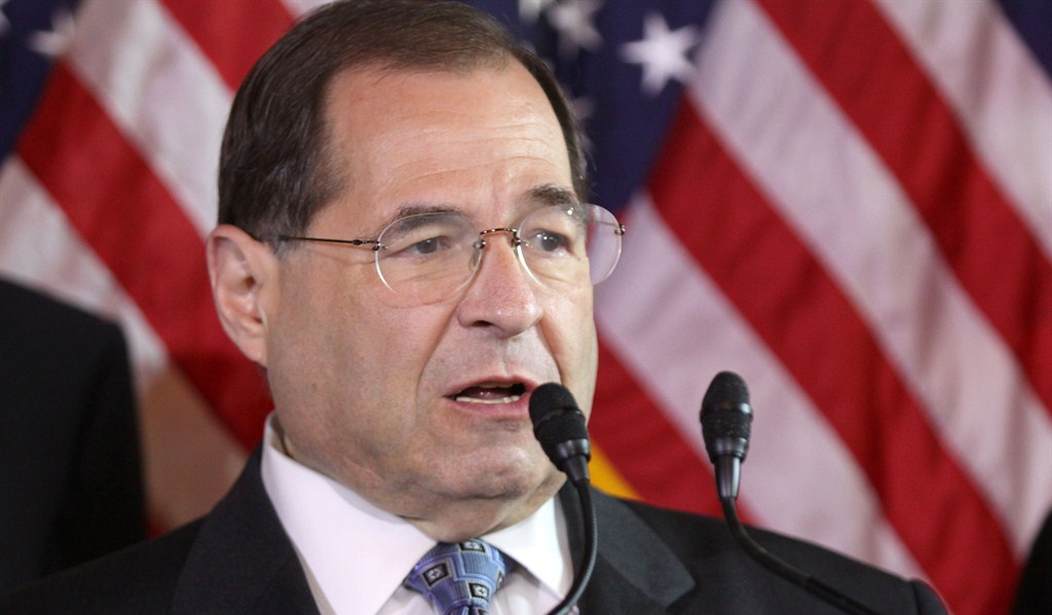Kudos to David Sirota and Andrew Perez for drilling reality into progressive consciousness, but will that reality fully sink in? Perhaps this chart will help, especially in the loaded use of the “Top 1%” label that underscores their point. The repeal of caps on state and local tax (SALT) deductions would almost entirely benefit the wealthiest Americans … otherwise known as Democrats’ donor base these days.
Sirota and Perez accuse Republicans of deception over estate-tax thresholds as well, to which we’ll return later. Suffice it to say that there’s enough in common for the two to use that comparison to accuse Democrats of abandoning the working class by selling out to the One Percent in their SALT cap fight. The fight matters for very different reasons to Democrats than the estate tax does to Republicans, however:

Notably, members of Congress are not pushing a far more progressive reform of the SALT cap. They are also not pushing to merely raise the cap so that it provides a few more deductions to the lower end of top earners. Instead, they are demanding a full repeal of the cap, which would make sure the maximum amount of deductions flow to the richest sliver of the population.
They are doing this all while insisting that their crusade is designed to restore tax breaks that “ensured that New York State middle-class families were not taxed twice on their income,” as the New York congressional members wrote. …
The progressive-leaning Center on Budget and Policy Priorities reports that “the top 1 percent of households would receive 56 percent of the benefit of (a SALT cap) repeal, and the top 5 percent of households would receive over 80 percent of the benefit, while the bottom 80 percent of households would receive just 4 percent.”
A Tax Policy Center report found that had the caps been repealed in 2018, that would have benefited almost all households making more than $1 million — and the average annual benefit among that group that year would have been $47,000.
The same report found that just 2 percent of households making between $50,000 and $75,000 would have benefited, and the average benefit would have been just $250. Just 16 percent of households earning between $100,000 and $200,000 would receive any benefit — and that small handful would see an average tax cut of $780.
Well, it’s not tough to figure this one out, but Sirota and Perez deserve credit for exposing this hypocrisy nonetheless. As I’ve written repeatedly, the $10,000 cap for the deduction benefits most Americans, and almost everyone below the upper-middle-class limits on income. They’re still able to deduct most, if not all, of the state and local income taxes levied against them. Repealing the cap by definition would only benefit higher-income earners, not “working class Americans,” as Rep. Jerrold Nadler declared last week.
However, for all of the detailed and accurate analysis of this issue that Sirota and Perez provide, they do miss one key aspect of SALT cap repeal. Democrats like Nadler and Andrew Cuomo push repeal in order to protect high tax rates in states like New York, not just to protect their donor base. The two come close in noting that the cap might have been an effort to “punitively punish blue states” by Donald Trump, although they also argue that motive doesn’t matter when assessing the policy. Motive does matter on repeal, however; the caps put a significant disincentive on states to raise tax rates and plenty of pressure on those with the highest tax burdens to lower those rates.
New York, for instance, now has the highest tax burden in the country. The previously unlimited SALT deduction allowed their residents to shift that burden to the federal government — essentially forcing lower-rate states (with less wealth as well) to subsidize that burden. That unlimited deduction meant little accountability for tax hikes at the state and local level. Now that wealthier families (especially the donor class) have to fully absorb those tax losses, they will either fight further tax hikes and demand that these states lessen those burdens, or they will move to lower-tax states instead and take their wealth with them.
That’s the main reason blue-state Democrats want the cap repealed. It’s not just a donor-base issue; it’s a blank-check issue in states like New York, California, and others (Minnesota, for instance). The cuts in revenue to come will force them to start cutting back on their spending, which will then limit their big-government aspirations.
That makes this somewhat different than the estate-tax issue for the GOP, although the criticism from Sirota and Perez is not entirely off the mark either. It’s been sold on two tracks by conservatives: on legitimate principle as a double-taxation issue, and as an attack on middle-class wealth. The latter has been vastly overblown over the last decade as the threshold has increased from $1 million to $11 million, a level of wealth that is hardly middle-class. Biden wants to take that threshold back down to $1 million, which would impact more families in the middle class, but probably not vastly more. This is mainly a donor-base issue too for the GOP (apart from the double-taxation principle), but it’s not in service to higher tax rates and bigger government, as the SALT cap repeal clearly is.








